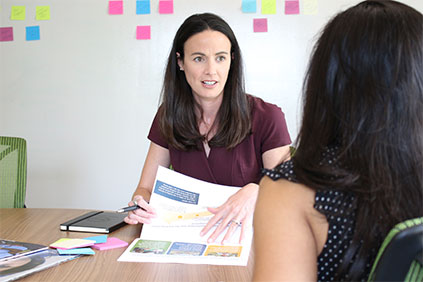One of the true joys of my work is the opportunity to collaborate with dedicated philanthropists who, passionate about a particular issue, are at a critical inflection point: They can see the potential for scaling, and want to invite other philanthropists to partner with them.
This is an exciting and creative time as we envision what additional investment could unlock and what more can be achieved.
Maybe you can identify: There’s an issue that has come to be very important to you over time. Perhaps it’s women’s health, girls’ education, species conservation, medical research, or even a particular geography that’s really close to your heart.
Whatever it is, you’ve invested in it over several years, and you’ve become a champion and advocate of the cause.
You’re energized by the impact you’re having—and you can see how much more impact could be achieved with more investment. You’re starting to see how the needle could tip if only other philanthropists could see this important issue through your eyes.
The trouble, of course, is that they don’t see it through your eyes—yet. They see it through theirs. And though your passion may well be contagious, it may not be enough to make this issue their passion as well.
How do you ensure that if you build it, they will indeed come?
I have too often seen philanthropists focus strictly on the plumbing—like setting up a giving vehicle—without giving enough thought to how they are going to woo their fellow philanthropists.
The mechanism is important, and you want it to be efficient, transparent, simple, and effective. But efficient, transparent, simple, and effective aren’t enough to get people to sign up.
You need to stoke their passion. You need to get them to see it through your eyes.
Fortunately, there are some clear steps you can take to vastly increase your chances of successful philanthropic partnerships—of bringing other philanthropists on board to fund your issue, and of eventually turning them into equally-passionate champions.
Identify your audience
Maybe it’s a small group of your peers. Maybe it’s philanthropists you don’t know personally, but who are investing in similar work. Or maybe you don’t yet know who your people are. Whatever the case, you need a tailored outreach strategy.
It may also be helpful to conduct a donor landscape study to understand who has already shown interest in your issue area—or who is funding contiguous issues that might be interested. A donor who is funding maternal health might also be interested in nutrition if you can connect the dots for her.

Analyze your competition
You might not like to think of other causes as competition, but, the truth is that there are many great organizations out there, and the philanthropists you’re targeting are probably being targeted by others, too.
There’s a reason you have chosen your particular cause and your specific approach. And there’s a reason it rose above the rest for you as the most promising, most impactful, or most compelling. What is that reason?
This may be a helpful time to do a competitive analysis to ensure you truly do understand all of the players in the sector and how the approach you’re supporting is distinct. Your most compelling argument will be to articulate that to potential partners in a way that both conveys your personal passion and is well grounded in facts and a firm understanding of the sector.
Zero in on your unique selling proposition
The competitive analysis should make it crystal clear what are the unique aspects of the approach you’re supporting—and also where other approaches have an advantage. Maybe yours is more cost-effective, more scalable, more innovative, or more tailored to a specific geography.
Whatever the advantage is, it should be clear in how you message it to potential partners. This applies to your written as well as spoken communication, from your pitch deck to your most unscripted conversations.
Make sure there’s something in it for them
What if another philanthropist were to approach you tomorrow to fund their issue? What would need to happen for you to get on board? Put yourself in your potential partner’s shoes as you consider the following:
Governance—Will your partners have an equal voice to you about how funding is directed, or are they turning over a blank check for you to direct? Not surprisingly, most folks prefer the former.
Accountability—Where will the giving vehicle sit? Will you build a fund at a neutral third party or ask for donations to your own entity? Again, not surprisingly, the first option is most attractive. How will partners know what impact they’re having? Will they see financial reports? How often? What can they expect?
Connection—How will your partners be able to interact with the work? Can they take field visits? Will they get detailed impact reports? Will they be briefed by the implementers, or get to see videos?
Even if these questions aren’t verbalized, your potential partner is likely wondering about many of them. Know the answers ahead of time and be proactive about communicating them.
Get really clear on your message
Hone it. Make sure you can sincerely answer each of these questions:
- What’s the problem you’re solving and why should I care?
- Why is this approach the one I should get behind?
- What’s the vision I’m buying into?
- What’s the incremental difference I can make—and that wouldn’t happen without my investment?
Each of these steps take time—time you don’t want to spend when you really want to fast forward to multiplied resources and multiplied impact for the cause you care about. But it’s time well spent.
Yes, it’s quicker to just build it, and assume that they will come—that your passion will catch on.
But spending the time now to be thoughtful about your approach will ensure a much greater chance of success for you and for your partners—and for the extraordinary cause that motivated you to take this step in the first place.

